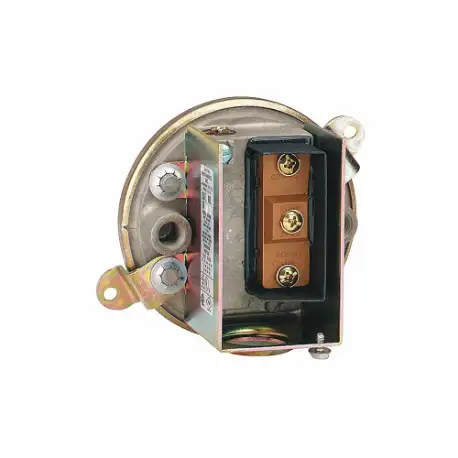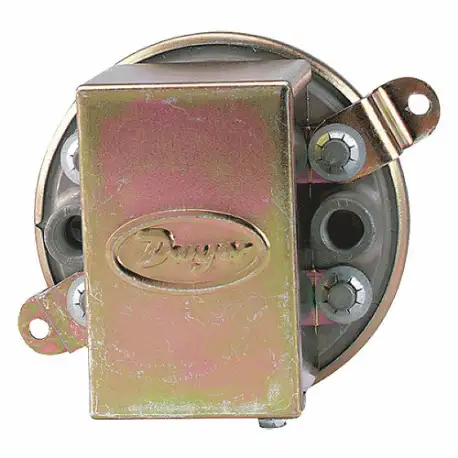Dwyer air pressure switch, 1910-00 is designed for clogged filter detection, air conditioning, defrost cycle initiation and variable air volume controller operations.
Features:
- Dwyer 1910-00 low differential pressure switch features lightweight & compact construction for an accurate fit and long-term operation.
- This unit has an SPDT (single-pole double-throw) switch for on / off function and to detect any change in the vacuum level.
- It has common, normally open & normally closed electrical connections and comes with 1/8 inch female NPT connections for a perfect seal.
- It can operate at temperatures ranging from -30 to 180 degrees Fahrenheit.
Compatible Accessories:
- Dwyer A-489 Static Pressure Tip: It comes with a mounting flange and is designed for monitoring static pressure drop across cooling coils, air filters, discharge pressures & blower inputs.
- Dwyer A-399 Duct Pressure Monitor Kit: It is used with standard or manual reset model switches comprising tubing, mounting flange and adapters.
- Dwyer A-329 Street Ell: It is a brass adapter used for applications requiring right-angle connections.
- Dwyer A-302F-A Stainless Steel Static Pressure Tip: It comes with a mounting flange, including 3/16 inch ID plastic or rubber tubing, 4-inch insertion depth and mounting screws.
Standards and Approvals:
Frequently Asked Questions:
Q. What is the difference between a static pressure sensor and a differential pressure sensor?
A. A differential pressure sensor, often known as a DP sensor, is a unique kind of pressure sensor that gauges the difference in pressure between two ports on a device. It is distinct from a static or absolute pressure sensor that uses a single port to measure pressure.
Q. What should be the position of the pressure controller while installation?
A. It is calibrated to be used in a vertical mounting position.
Q. How do you adjust a differential pressure switch?
A. Only the cut-off pressure will change when the differential is altered. Cut-off pressure can be increased or decreased by turning the differential nut in either clockwise or counterclockwise direction.
Q. What are the maintenance requirements for a differential pressure switch?
A. To maintain optimal performance, regularly inspect the switch for any signs of damage, contamination or blockages. Clean or replace any clogged or dirty components. Additionally, verify the switch's calibration periodically to ensure accurate operation.
Q. Should I install this Dwyer Instruments 1910-00 compact low differential pressure switch vertically or horizontally?
A. It should be mounted in such a way that the diaphragm stays in the vertical position.
 € EURChange Country
€ EURChange Country






